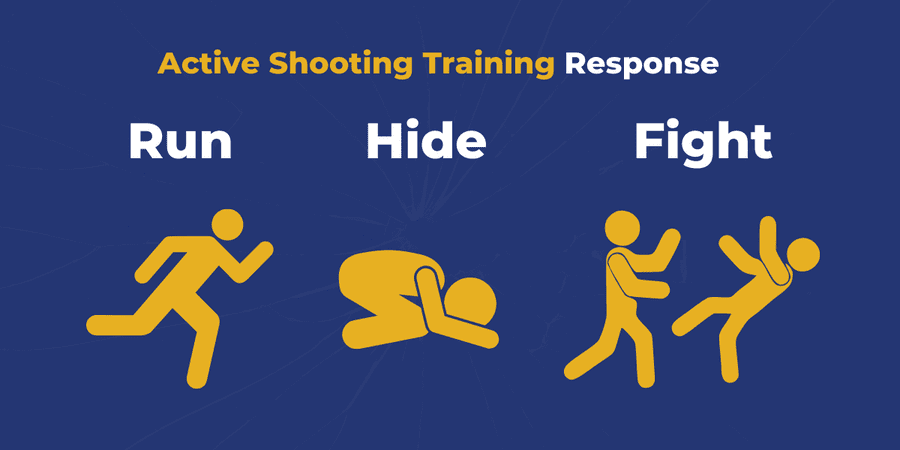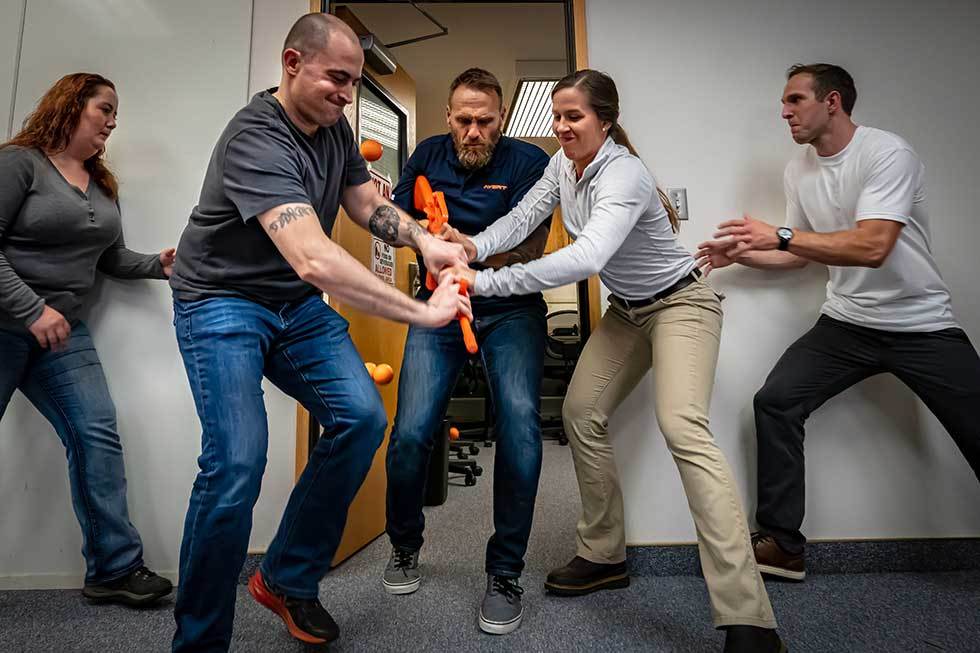Ensuring Public Security with Advanced Active Shooter Training Techniques
Ensuring Public Security with Advanced Active Shooter Training Techniques
Blog Article
Implementing Active Shooter Training: Ideal Practices for Developing a Safe and Prepared Area Setting
As neighborhoods confront the unsettling reality of energetic shooter occurrences, the implementation of thorough training programs becomes imperative. What are the important components that can change a common training program into a robust version for community durability?

Comprehending the Demand for Educating
In a period noted by increasing cases of physical violence in public areas, recognizing the requirement for energetic shooter training has never ever been much more crucial. The frequency of mass shootings throughout different environmentsâEUR" such as colleges, workplaces, and buying centersâEUR" highlights the urgency for individuals and organizations to be gotten ready for such emergency situations. Energetic shooter scenarios can unfold swiftly, leaving little time for people to react effectively. Detailed training campaigns can equip participants with the expertise and abilities to respond decisively.
Moreover, the emotional impact of violence on individuals and neighborhoods can not be overstated. Training promotes a feeling of empowerment and readiness, making it possible for individuals to really feel even more protected in their environments. It additionally advertises a society of safety and security, where recognition and alertness become essential components of life. The benefits of energetic shooter training expand past instant action; they include improving interaction protocols and improving total safety and security actions within companies.
Key Elements of Effective Programs
Efficient active shooter training programs include a number of essential components that improve readiness and action abilities. Extensive educational program growth is vital, ensuring that training web content is relevant, evidence-based, and customized to the specific requirements of the organization or area. This includes recognizing the dynamics of energetic shooter incidents and the emotional effect on people included.
2nd, reasonable training situations need to be used to mimic possible situations, enabling participants to exercise decision-making and feedback techniques in a regulated setting. These drills promote muscular tissue memory and build self-confidence among individuals.
Third, a concentrate on communication methods is important. Developing clear lines of communication among law enforcement, emergency situation -responders, and individuals guarantees collaborated feedbacks during an occurrence. Normal updates and correspondence course assist keep interaction paths clear and reliable.
Fourth, ongoing assessment and comments devices should be integrated into the training program - active shooter training. Evaluating the efficiency of training via individual responses and performance metrics enables continual enhancement
Last but not least, cultivating a society of safety and security and preparedness within the community motivates caution and aggressive procedures, making certain that people are not just trained but also involved in keeping a secure environment.
Engaging Community Stakeholders

To successfully engage these stakeholders, it is necessary to connect the goals and advantages of the training. Organizing educational sessions can help make clear the training's purpose, address problems, and detail the roles each stakeholder might play. Developing a stakeholder advisory committee can promote continuous discussion, allowing for varied viewpoints and insights to be integrated right into the training program.
Structure partnerships with neighborhood leaders and companies is likewise vital. Their support can boost outreach initiatives, increase engagement, and ensure that training is tailored to the special demands of the area. Additionally, stakeholders can help in distributing details and resources, strengthening the message of safety and security and preparedness.
Ultimately, engaging neighborhood stakeholders not just strengthens the training campaign yet also grows a sense of ownership among locals, resulting in a much more durable and educated area efficient in reacting properly to possible threats.
Training Delivery Approaches
Making use of a selection of training distribution approaches is essential to suit the varied discovering styles and needs of individuals in energetic shooter training programs (active shooter training). Reliable training can take several types, including lectures, hands-on simulations, on-line components, and interactive workshops. Each technique serves a distinct purpose and can boost the overall understanding experience

On the internet components provide flexibility and availability, enabling individuals to find out at their own rate. These can consist my website of video clips, quizzes, and discussions to assess understanding. Interactive workshops urge team conversations and analytic, promoting team effort and interaction abilities.
Incorporating a mixed method that integrates these approaches not just enriches the training experience but also ensures that participants are better prepared to respond successfully in case of an energetic shooter scenario (active shooter training). By addressing various learning preferences, organizations can produce an extra informed and responsive community
Continual Analysis and Renovation
Normal analysis and enhancement of active shooter training programs are vital to preserving their significance and effectiveness. As risks progress, so should the approaches and techniques used in training. Continual evaluation ensures that training content mirrors the most up to date knowledge on energetic shooter events, integrating lessons discovered from recent events and readjusting for arising patterns.
To promote this process, organizations must establish responses systems that include participant evaluations, specialist testimonials, and occurrence debriefs. Collecting data on individual performance during drills and workouts is crucial, as it highlights locations requiring renovation and notifies future training sessions. Additionally, involving with police and emergency -responders can look these up provide valuable understandings into the usefulness and applicability of training procedures.
On a regular basis set up testimonials of training materials and strategies must be mandated, fostering a setting of development and adaptability. Organizations has to likewise urge a society of ongoing understanding, where personnel Discover More feel equipped to recommend modifications based upon their experiences. By committing to constant evaluation and renovation, organizations not only boost the efficiency of their energetic shooter training programs however additionally enhance their total dedication to safety and readiness within the neighborhood.
Verdict
In final thought, reliable implementation of energetic shooter training demands a comprehensive technique that focuses on community interaction and practical simulations. By developing tailored curricula, including varied training methods, and promoting partnership amongst stakeholders, neighborhoods can boost readiness. Continuous examination and responses devices are important for adapting programs to emerging dangers, therefore strengthening overall security. Eventually, a commitment to continuous training and renovation grows a society of watchfulness and preparedness, guaranteeing a much safer atmosphere for all neighborhood participants.
Report this page